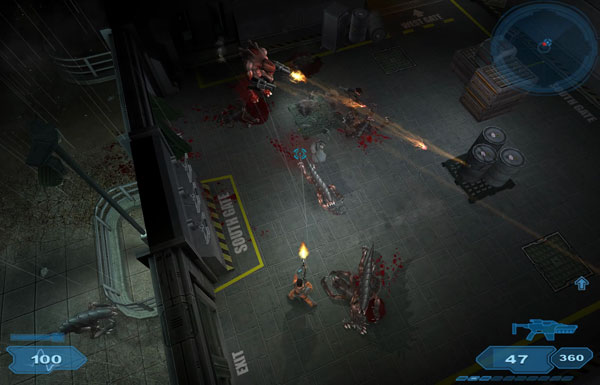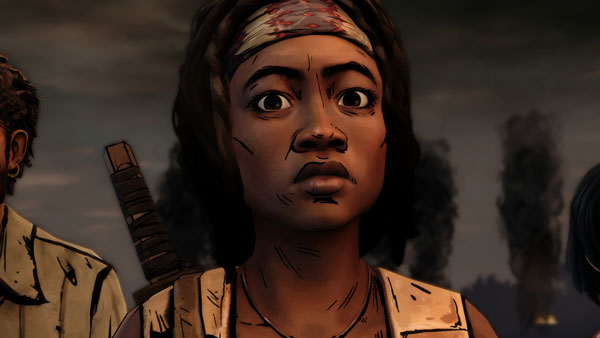
Johan Norberg wrote one of the clearest accounts of the 2007 financial meltdown and, after that dismal tale, he’s back with a more uplifting story. Politicians and partisans constantly tell us that things are worse than ever: more violence, more poverty, etc. Progress goes about showing that, in just about every important metric, the world is a measurably better place than it ever has been in the past. Fewer people die in wars, the world is cleaner, we are better educated, live longer, and the percentage of people in extreme poverty has dropped by double digits. So everyone just calm the hell down.

A forgettable Italian police drama starring a guy who looks like a young Victor Davis Hansen. Plot was something about prostitutes and petty thieves and rich guys and cops who steal and frequent prostitutes to solve a case. Rule of law was probably new to Italy in 1975.

I’m a sucker for these top-down shooter games. This is the type of game I imagined playing back when the cutting edge AAA title was Berzerk for the 2600. I have yet to find one that actually rises to my expectations. Shadowgrounds is okay, but there is a clunkiness to the whole package that keeps it from being a great game.
Aside from the wooden voice acting and forgettable story, the combat needed to be amped up a little more. Enemies take several hits to kill and the battles all feel like your just running backwards and shooting. Maybe some better designed environments, with more options for exploration and interaction, would have made the difference. Or maybe just a more massive onslaught of easier to kill enemies and a more arcade feel would have been better. I don’t know.

This three episode tangent does not appear to be connected with the other Walking Dead games. Maybe some of the characters will make their way into season three, but for the most part this is about Michonne coming to grips with the loss of her daughters while helping a family survive from the usual assortment of humanity free bad guys. I enjoyed the game, but Telltale needs to push their formula a little more and add a bit more consequence to your actions.

This was a strange disjointed kung-fu movie about a female wannabe Shaolin disciple who is taken under the tutelage of elderly hermit. The ten Kung-Fu Classic books are stolen from the temple and she is tasked with getting them back. But first she needs to learn all ten classic techniques… that… were stolen? Nothing in this movie makes any sense but it’s filled with wacky visuals (like stretchy arm boxing) to make up for the incoherence.

This movie felt like a Hans Baldung woodcut brought to life. Set in a dark New England forest in the 1600’s, the characters all talk in a difficult to understand version of old English. Their family is being harassed by a witch and all sorts of creepy animals. Although you see the witch early in the film, she isn’t really in it much. The film is mostly about the deeply religious family coming apart as weird events happen and children disappear. I didn’t think that it was particularly scary, but the imagery really stuck with me. Especially the final moments of the movie when all is revealed.

I was expecting something a bit more action packed. Instead this movie is just a series of scenes of people talking to each other from across a table in which one of the participants may snap at any time. Sure it’s tense, but when all was said and done, it felt like nothing had happened the entire movie.

Christopher Guest has created another fake documentary about a bunch of characters trying to win a contest. This time they are trying to win the award for best team mascot. Amusing, but not nearly as good as some of his past efforts. I think I just didn’t like this younger group of actors as much as the SCTV-era comics from his other films.

I have finally gotten around to watching Dario Argento’s most recent movie—his 3-D take on the Dracula story. Everything that has been wrong about Argento’s post-Stendhal Syndrome work is on display here. The acting is terrible, the story is dumb and the effects are a lame CGI mess. Most importantly, he has completely lost any sense of the dynamic visual style of his classic work. Despite the 3-D (or maybe because of it), the compositions are flat and boring and it feels like a movie of the week. I can only think of one scene, in which Dracula attacks a room full of townspeople, that has any energy or flair to it. I may have to watch Trauma again to be sure, but this is probably his worst film.

Having blunted the needle on my iTunes from playing Bobby Womack’s title song so much I thought it was about time I saw the film he wrote it for. I went in expecting the usual black-exploitation trash, but this movie is more of a cross between The French Connection and Superfly. The story follows three groups of characters: the mobsters, the petty criminals who killed said mobsters’ men, and the cops on the case. It’s a dark and gritty film filled with racial tensions and not much in the way of happy endings or genuinely good characters (except maybe Yaphet Kotto’s Lt. Pope). Sometimes it a bit over-the-top in its portrayals, but it was riveting all the way through.




